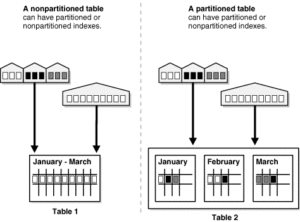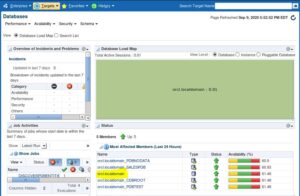Datafile corrupt is a partial disaster in database. it will impact for all objects belonging the tablespace. In this case, DBA can either restore the problematic/corrupted datafile from backup.
Category: OCM Preparation
Nov 07 2020
Performing Block Media Recovery in Oracle
In most cases, the database marks a block as media corrupt and then writes it to disk when the corruption is first encountered. No subsequent read of the block will be successful until the block is recovered. You can only perform block recovery on blocks that are marked corrupt or fail a corruption check.
Oct 27 2020
Configure and Manage RMAN Recovery Catalog
Recovery Catalog: A set of Oracle tables and views used by RMAN to store RMAN repository information about one or more Oracle databases. RMAN uses this metadata to manage the backup, restore, and recovery of Oracle databases. Target Database: In an RMAN environment, the database to which you are connected as TARGET. The target database is …
Apr 13 2020
Create and Manage Partition Table in Oracle
Partitioning allows tables, indexes, and index-organized tables to be subdivided into smaller pieces, enabling these database objects to be managed and accessed at a finer level of granularity. Partitioning enhances the performance, manageability, and availability of a wide variety of applications and helps reduce the total cost of ownership for storing large amounts of data.
Apr 08 2020
Configure Resource Manager on Container Database
The following issues DBAs may face in oracle databases but we can overcome these issues by using Resource Manager: Excessive overhead: Excessive overhead results from operating system context switching between Oracle Database server processes when the number of server processes is high. Inefficient scheduling: The operating system deschedules database servers while they hold latches, which …
Apr 07 2020
In-Database Archiving
Companies may need to keep data for longer time for compliance purposes even there is not use these data for companies. In-Database Archiving enables you to archive rows within a table by marking them as inactive. These inactive rows are in the database and can be optimized using compression, but are not visible to an application. The data in these …
Apr 05 2020
Temporal Validity in 12c
Temporal Validity enables you to track time periods for real world validity. Valid times can be set by users and applications for data, and data can be selected by a specified valid time, or a valid time range. Concepts that are integral to valid time temporal modeling include: Valid time: This is a user-defined representation …
Apr 03 2020
Oracle Data Pump (expdp, impdp) in Oracle Database
The Data Pump feature had been introduced from Oracle 10g. Until Oracle 9i, There were a tradition export and import (exp, imp) tools for logical backup. Nowadays Data Pump (expdp & impdp) utilities are mostly use by oracle DBA. Data Pump is very useful tools to migrate database in difference version of Oracle databases or …
Apr 02 2020
Configure Heat Map & Automatic Data Optimization (ADO) in Oracle 12c
Nowadays Data is growing very rapidly at enterprises – various industry estimates indicate that data volume is doubling every 2-3 years. The rapid growing data is going to be challenged for IT, both in cost and performance. Although the cost of storage keeps declining, fast-growing data volumes make storage one ofthe costliest elements of most …
Mar 25 2020
Configure the network environment for Multitenant Database
This topic describes how to configure the network environment on Multitenant Database. Create a Service. Create a Listener. Create a Service: List of Services: Create a Service for PDB: DBMS_SERVICE package will use for creating a new service. For GI env, you may use srvctl to create and manger a service. When execute DBMS_SERVICE.CREATE_SERVICE procedure, …




